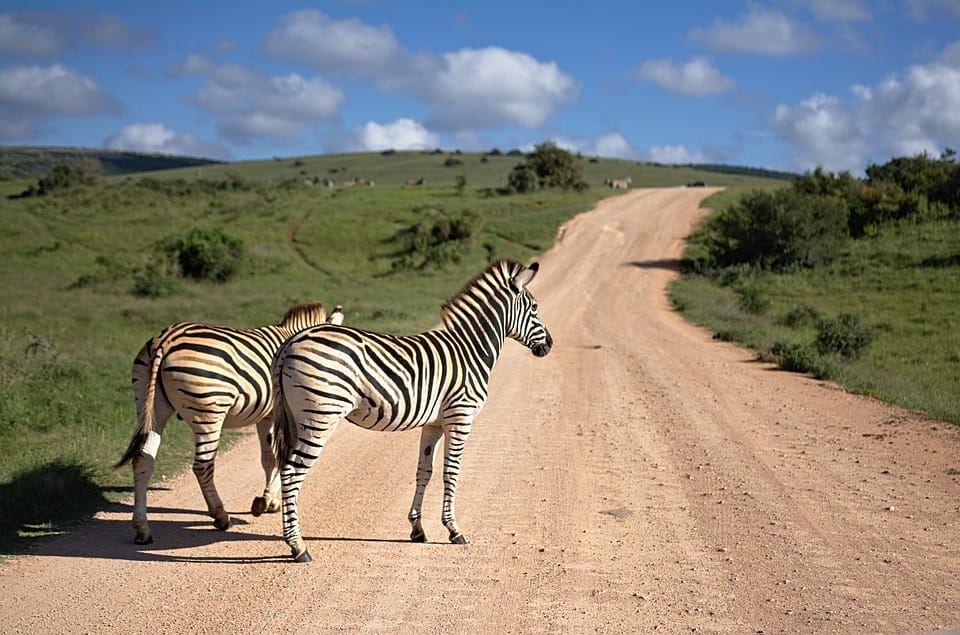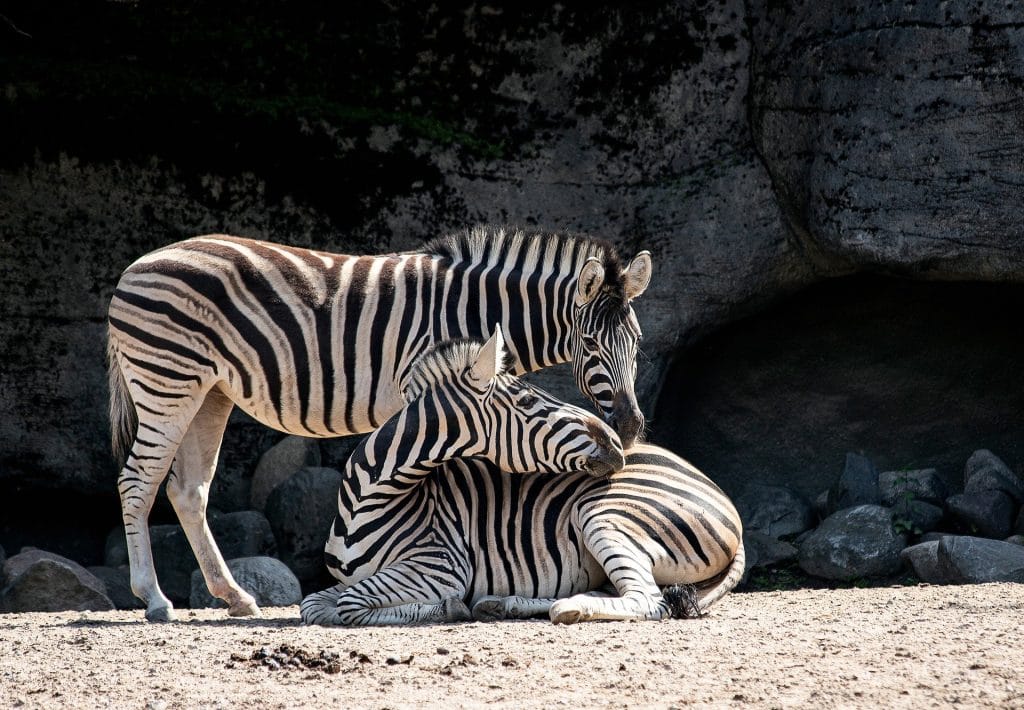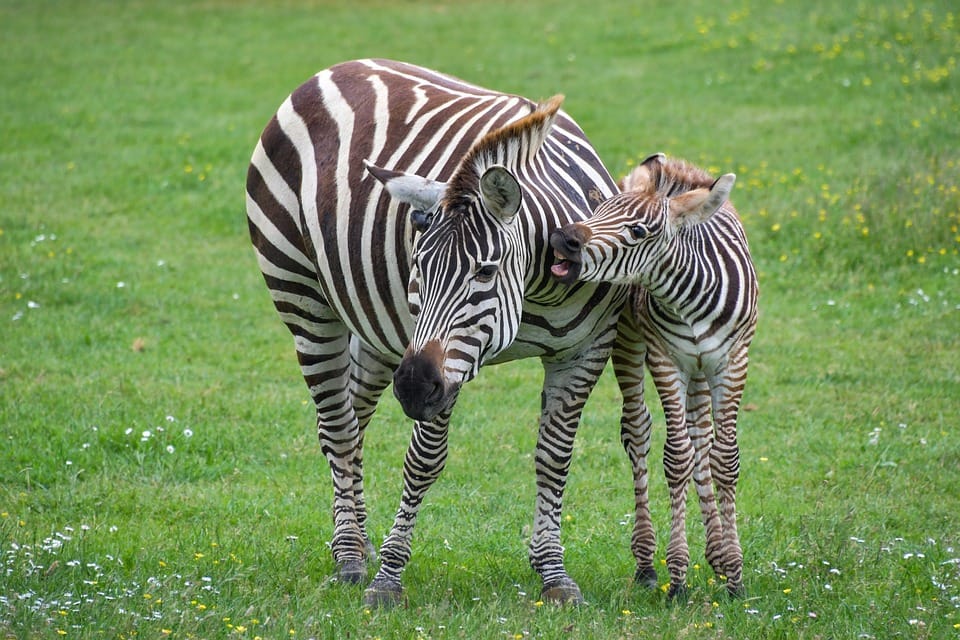Many people think that the striped color of zebras helps them camouflage and thus protect themselves from predators. We checked whether this is indeed the case.
Authoritative scientists tell Mediathat the stripes of zebras look like cast shadows, and the running herd, merging into a single shimmering mass, confuses the predator. This version support And popular science portals O animals. Users askwhy do zebras need stripes? services questions and answers.
Scientists from the University of Calgary (Canada) and the University of California at Davis also wondered whether zebras really need stripes to hide from predators. They spent study, which involved applying various filters to digital images of zebras to simulate the vision of the predators. In addition, by assessing the width and contrast of the stripes, scientists calculated the maximum distance at which lions, tigers or hyenas can see the color of a zebra. It turned out that predators do not distinguish stripes at a distance of more than 50 m during the day, 30 m at dusk and 9 m on moonless nights. They see some outlines, but not color, so camouflage at that time is pointless. At a shorter distance, when the stripes are already distinguishable and could help zebras hide in this way, predators can already hear and smell their prey, so camouflage will no longer help. Scientists have come to the conclusion that in forested areas the striped color of animals could still serve as camouflage, but zebras live mainly in savannas, in open spaces, where their stripes simply have nothing to blend in with.
Version The idea that this color creates an optical flickering strobe effect that confuses predators, which was expressed by some scientists, was also refuted by zoologists from Calgary and California. Their experiences showedthat the eye of a predator can easily distinguish the outlines of a zebra in an open area no worse than an animal of a single color. In addition, in times of danger, zebras prefer to run rather than hide, which, according to scientists, also discredits the version with stripes as camouflage.

Tim Caro, a biologist at the University of California, Davis, is one of those who has conducted experiments with filters that mimic the vision of predators. spent It took more than 20 years to figure out why zebras need stripes. He analyzed each hypothesis and published monograph, where he described in detail his numerous experiments and proved the inconsistency of most existing theories. Besides camouflage, there are two most likely and common versions of why zebras need stripes: thermoregulation and protection from insects.
Some scientists believethat stripes help zebras avoid overheating by providing thermoregulation. They conducted a study and found that zebra striping is more intense where the habitat is hottest (or with the most intense sun). Biologists Alison and Stephen Cobb, also proponents of the theory of thermoregulation, discoveredthat the temperature of the black stripes on a zebra’s body in the hottest time of day is 12–15 °C higher than the white ones. In this case, animals can lift or smooth their heated fur, thus providing themselves with either cooling during the day or maintaining heat in the early morning.
However, experiment Hungarian scientists refutes this theory. They placed barrels of water in the sun and covered them with artificial and natural zebra skins, as well as white and gray skins. It turned out that the latter cool water much better and protect against overheating. According to scientists, this proves that stripes could not have evolved in zebras for thermoregulation, since from an evolutionary point of view this is not justified.

Another version, the most probable today, is that stripes help zebras protect themselves from insect bites. In 2014, Tim Caro and his colleagues collected and systematized data on the relationship between the degree of striping of zebras and external environmental conditions. It turned outthat there are more stripes and they are more contrasting where there are more parasitic insects. After this, Karo and a group of scientists moved on to experiments: They watched zebras and horses. At the same time, scientists put striped “cloaks” on some horses to disguise them as zebras, and horseflies were less likely to land on striped surfaces. Apparently, the stripes confused the insects and they could not find a place to land, but scientists have yet to find out the true reason for their behavior.
This version was confirmed by experience Karo's Japanese colleagues. They applied stripes to the skins of several cows and began to observe. As a result, those cows whose skins were striped were bitten half as often as others.
Thus, it is not yet known for certain why zebras need stripes and why they appeared during evolution. Scientists answer that even the main hypotheses can be divided into at least 18 separate versions and so far there is no clear answer to this question. But existing research suggests that stripes do not provide camouflage for zebras from predators, and at the same time help confuse insects and protect themselves from their bites.
Most likely not true
Read on the topic:
- Tim Caro. Zebra stripes
- Is it true that chameleons change color for camouflage purposes?
- Is it true that the flight of a bumblebee contradicts the laws of physics?
If you find a spelling or grammatical error, please let us know by highlighting the error text and clicking Ctrl+Enter.






